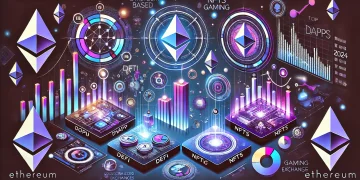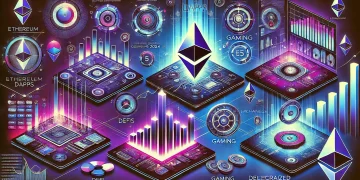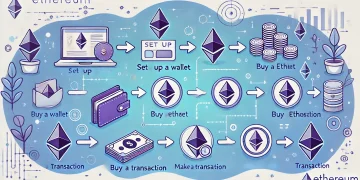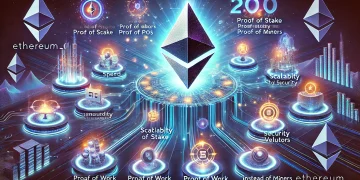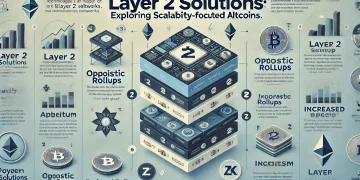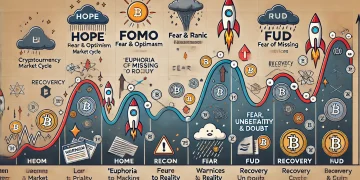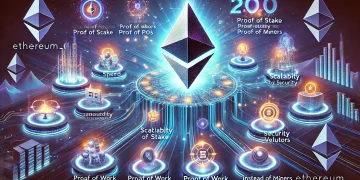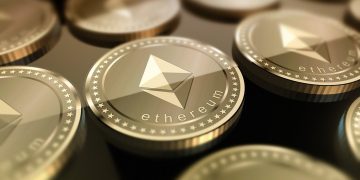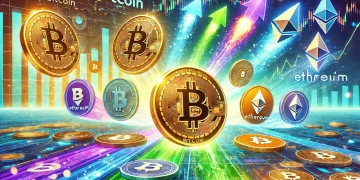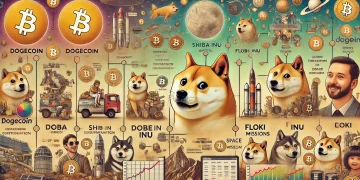Non-Fungible Tokens (NFTs) have revolutionized digital ownership, creating unprecedented opportunities for artists, creators, and entrepreneurs. As the digital art world continues to expand, understanding how to create and sell NFTs has become an essential skill for those looking to participate in this revolutionary space. This comprehensive guide will walk you through the process from conceptualization to final sale, ensuring you have the knowledge needed to successfully launch your first NFT.
Understanding NFTs
Before diving into creation, it’s crucial to grasp what NFTs truly represent in the digital landscape. An NFT is a unique digital token that represents ownership of a specific digital asset. Unlike cryptocurrencies such as Bitcoin or Ethereum, each NFT is unique and cannot be replaced with something else of equal value. This uniqueness is what makes NFTs powerful tools for digital creators.
The blockchain technology underlying NFTs ensures that each token has distinct properties recorded immutably. This creates provable scarcity and a transparent ownership history, allowing creators to monetize digital assets in ways previously impossible. The indivisible nature of NFTs also means that, unlike cryptocurrencies, they cannot be broken down into smaller units.
Preparing to Create Your NFT
The foundation of your NFT journey begins with selecting the right blockchain platform. Ethereum currently dominates the NFT space, offering the largest ecosystem and highest liquidity. However, this comes with the drawback of high gas fees and environmental concerns. Alternatives like Solana provide faster transactions and lower fees but have smaller markets. Polygon offers an interesting middle ground, providing Ethereum compatibility with reduced costs.
When it comes to marketplaces, OpenSea stands as the giant in the space, offering a user-friendly interface and support for multiple blockchains. Rarible has carved out a niche as a community-driven platform, while Nifty Gateway has become known for high-value, curated sales. As a beginner, OpenSea’s extensive user base and intuitive interface make it an ideal starting point.
Creating Your Digital Asset
The heart of your NFT lies in the digital asset itself. This could range from digital art and music to videos, virtual real estate, or written content. Regardless of the medium, originality should be your guiding principle. The NFT space values unique, creative content that pushes boundaries and offers something new to collectors.
When creating your digital asset, maintain the highest possible quality standards. For visual content, this means working with high resolutions and paying attention to detail. Musicians should ensure professional audio quality, while writers need to focus on compelling, well-edited content. Your metadata should tell a story, going beyond basic descriptions to create context and value for potential collectors.
Setting Up Your Crypto Wallet
A crypto wallet serves as your digital identity in the NFT space, allowing you to create, buy, and sell NFTs. MetaMask has emerged as the industry standard, offering robust security features and seamless integration with most NFT platforms. Setting up your wallet involves more than just installation – it’s about creating a secure foundation for your NFT activities.
The process begins with installing your chosen wallet and securing your seed phrase – a series of words that act as the master key to your wallet. This phrase should be stored securely offline, as losing it means losing access to your NFTs and cryptocurrencies. Once your wallet is set up, you’ll need to add funds for gas fees, which are required for any blockchain transactions.
Creating Your First NFT
The actual creation process begins by connecting your wallet to your chosen marketplace. Once connected, you’ll navigate to the creation interface, often labeled as “Create” or “Mint NFT.” Here, you’ll upload your digital asset and begin the crucial process of adding details that will make your NFT discoverable and valuable.
Your title and description are more than just labels – they’re opportunities to tell the story behind your creation. Take time to craft compelling text that explains your inspiration, process, and the value proposition for potential collectors. Consider the properties or attributes you can add to your NFT, as these can enhance its uniqueness and collectibility.
When it comes to pricing, thorough market research is essential. Examine similar NFTs, considering factors like the artist’s reputation, the uniqueness of the piece, and current market conditions. You’ll also need to decide between a fixed price sale or an auction format. While fixed prices offer certainty, auctions can potentially drive higher sales through competitive bidding.
Marketing Your NFT
Success in the NFT space extends beyond creation – effective marketing can make the difference between a successful sale and an overlooked piece. Twitter has emerged as the primary platform for the NFT community, making it essential for networking and promotion. Building a presence there involves more than just announcing your NFT; engage with other creators, share your process, and become part of the community.
Timing plays a crucial role in your NFT launch. The market has its rhythms, with certain days and times showing higher activity. Beyond timing, consider creating a narrative around your launch. This could involve sharing your creative process, explaining the significance of your work, or offering behind-the-scenes insights that help collectors connect with your creation.
Post-Sale Considerations
The sale of your NFT isn’t the end of the journey – it’s often just the beginning. Many successful NFT creators focus on building long-term value for their collectors. This might involve creating additional content, offering exclusive access to future projects, or building a community around your work.
Smart contracts can be set up to ensure you receive royalties from secondary sales, typically ranging from 5-10%. These ongoing royalties can provide a sustainable income stream as your NFTs change hands in the secondary market. However, it’s important to balance royalty percentages against market norms and collector expectations.
Legal and Tax Implications
The NFT space, while exciting, comes with legal and tax considerations that shouldn’t be overlooked. Ensure you have clear rights to all content used in your NFTs, as intellectual property issues can arise. Keep detailed records of your creation costs, sale prices, and gas fees, as these will be important for tax purposes.
The tax implications of NFT sales can be complex, varying by jurisdiction. Many tax authorities are still developing their approaches to NFT taxation, making it essential to consult with tax professionals who understand both cryptocurrency and digital asset sales. Being proactive about compliance can save significant headaches later.
The Future of NFTs
As we look ahead, the NFT space continues to evolve rapidly. Interactive NFTs are emerging, offering experiences that change and evolve over time. Cross-platform compatibility is improving, allowing NFTs to be used across different platforms and games. The integration of NFTs with physical items is also expanding, creating new possibilities for authenticity verification and unique collecting experiences.
Conclusion
Creating and selling your first NFT is more than just a technical process – it’s an entry point into a new frontier of digital ownership and creativity. By understanding the fundamentals, focusing on quality and originality, and building genuine connections within the community, you can position yourself for success in this exciting space. As the technology and market continue to evolve, those who prioritize value creation and authentic engagement will find the most rewarding opportunities in the world of NFTs.

